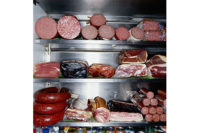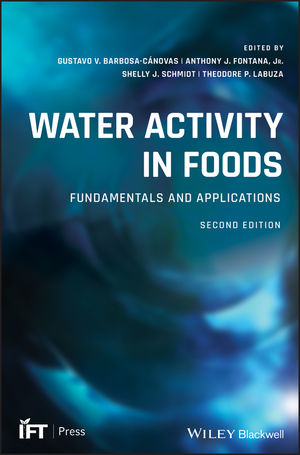Columbus Foods pays 2009 ammonia fines
Environmental Protection Agency and Department of Justice officials said they settled a three-year case involving South San Francisco, Calif., food processor Columbus Manufacturing Inc., a wholly owned subsidiary of Columbus Foods LLC.
EPA said Columbus agreed to pay a penalty and make significant upgrades to settle Clean Air Act violations. The case stems from two releases of anhydrous ammonia that occurred in 2009 at its manufacturing facility located in South San Francisco, Calif.
As part of the consent decree announced today, Columbus will pay a penalty of $685,446 and spend approximately $6 million to convert its refrigeration system to a safer technology that uses glycol and ammonia. The company will also improve its alarm and ammonia release notification procedures.
Officials said the first accidental ammonia release, in February 2009, sent 217 pounds of poisonous gases into the atmosphere. Six months later in August 2009, the plant again released an ammonia cloud, this time approximately 200 pounds of anhydrous ammonia was released into the atmosphere.
Authorities said the releases were the result of "Columbus’ failure of its general duty of care to identify hazards and to maintain a safe facility and its failure to comply with regulatory requirements for process safety management under Section 112(r) of the Clean Air Act."
“This settlement appropriately penalizes Columbus for violations of the Clean Air Act that resulted in two illegal releases of poisonous gas that put the community at risk, including one release that caused the hospitalization of people in the affected community,” said Ignacia S. Moreno, assistant attorney general of the Department of Justice Environment and Natural Resources Division. “Today’s agreement will prevent future violations of the Clean Air Act safety standards by requiring Columbus to upgrade its refrigeration technology and emergency notification system.”
“Columbus is responsible for letting plumes of poisonous gas escape into the open air,” added Jared Blumenfeld, EPA’s Regional Administrator for the Pacific Southwest. “Our goal is to safeguard neighbors and workers by requiring critical improvements to the company’s plant to prevent these industrial accidents from happening again.”
The August incident resulted in the evacuation of all facility employees and several neighboring businesses. Nearly 30 people from the downwind Genentech campus sought medical attention and 17 individuals were hospitalized. One person remained hospitalized for four days. In addition, off-ramps from Highway 101 and several local streets were shut down as a result of the release.
EPA took action following the August 2009 incident, ordering Columbus to complete initial upgrades to its ammonia refrigeration system, including the replacement of safety relief valves and components with any signs of corrosion, and the proper labeling of all its piping. In 2011, the company paid $850,000 in fines to San Mateo County as a result of the incident.
Anhydrous ammonia is considered a poisonous gas. Exposure to its vapors can cause temporary blindness and eye damage, and irritation of the skin, mouth, throat, respiratory tract and mucous membranes. Prolonged exposure to anhydrous ammonia vapor at high concentrations can lead to serious lung damage and even death. Anhydrous ammonia is one of the listed extremely hazardous substances to which Section 112(r) of the Clean Air Act applies.
Enforcement of the general duty of care and of the regulatory requirements under Section 112(r)(1) and (7) of the Clean Air Act is critical to ensuring that industry focuses on the safety of the public and the environment.
EPA said Columbus agreed to pay a penalty and make significant upgrades to settle Clean Air Act violations. The case stems from two releases of anhydrous ammonia that occurred in 2009 at its manufacturing facility located in South San Francisco, Calif.
As part of the consent decree announced today, Columbus will pay a penalty of $685,446 and spend approximately $6 million to convert its refrigeration system to a safer technology that uses glycol and ammonia. The company will also improve its alarm and ammonia release notification procedures.
Officials said the first accidental ammonia release, in February 2009, sent 217 pounds of poisonous gases into the atmosphere. Six months later in August 2009, the plant again released an ammonia cloud, this time approximately 200 pounds of anhydrous ammonia was released into the atmosphere.
Authorities said the releases were the result of "Columbus’ failure of its general duty of care to identify hazards and to maintain a safe facility and its failure to comply with regulatory requirements for process safety management under Section 112(r) of the Clean Air Act."
“This settlement appropriately penalizes Columbus for violations of the Clean Air Act that resulted in two illegal releases of poisonous gas that put the community at risk, including one release that caused the hospitalization of people in the affected community,” said Ignacia S. Moreno, assistant attorney general of the Department of Justice Environment and Natural Resources Division. “Today’s agreement will prevent future violations of the Clean Air Act safety standards by requiring Columbus to upgrade its refrigeration technology and emergency notification system.”
“Columbus is responsible for letting plumes of poisonous gas escape into the open air,” added Jared Blumenfeld, EPA’s Regional Administrator for the Pacific Southwest. “Our goal is to safeguard neighbors and workers by requiring critical improvements to the company’s plant to prevent these industrial accidents from happening again.”
The August incident resulted in the evacuation of all facility employees and several neighboring businesses. Nearly 30 people from the downwind Genentech campus sought medical attention and 17 individuals were hospitalized. One person remained hospitalized for four days. In addition, off-ramps from Highway 101 and several local streets were shut down as a result of the release.
EPA took action following the August 2009 incident, ordering Columbus to complete initial upgrades to its ammonia refrigeration system, including the replacement of safety relief valves and components with any signs of corrosion, and the proper labeling of all its piping. In 2011, the company paid $850,000 in fines to San Mateo County as a result of the incident.
Anhydrous ammonia is considered a poisonous gas. Exposure to its vapors can cause temporary blindness and eye damage, and irritation of the skin, mouth, throat, respiratory tract and mucous membranes. Prolonged exposure to anhydrous ammonia vapor at high concentrations can lead to serious lung damage and even death. Anhydrous ammonia is one of the listed extremely hazardous substances to which Section 112(r) of the Clean Air Act applies.
Enforcement of the general duty of care and of the regulatory requirements under Section 112(r)(1) and (7) of the Clean Air Act is critical to ensuring that industry focuses on the safety of the public and the environment.
Looking for a reprint of this article?
From high-res PDFs to custom plaques, order your copy today!







